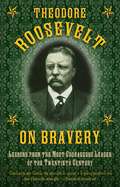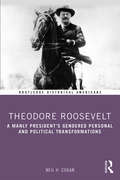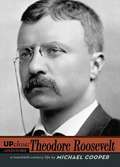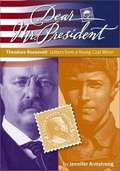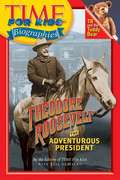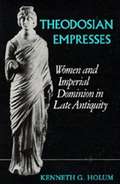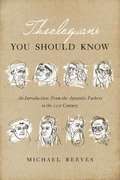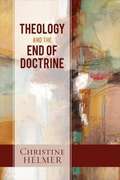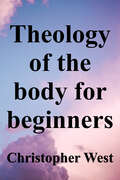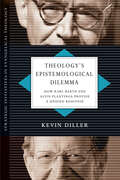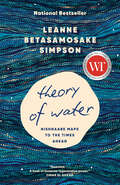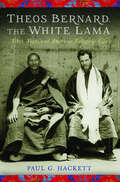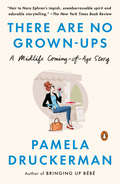- Table View
- List View
Theodore Roosevelt on Bravery: Lessons from the Most Courageous Leader of the Twentieth Century
by Theodore RooseveltTeddy Roosevelt is the only president in history to deliver a ninety-minute speech directly after being shot in the chest. He’s a Nobel Prize recipient, a Harvard graduate, and he was the youngest President in history to be inaugurated into office. Roosevelt’s force took America by storm in the early twentieth century, and he is regarded as one of the finest leaders ever to take office. His wisdom even earned him a spot in Mount Rushmore, which has immortalized him along with George Washington, Thomas Jefferson, and Abraham Lincoln. As a sickly child, Roosevelt was home-schooled his entire life until enrolling at Harvard University, where he studied biology. A year after graduating, he began his political career as the New York City police commissioner, and later as a member of the New York State Assembly, where he led the reform division of the GOP. In the time since his presidency, Roosevelt’s bravery has inspired generations of Americans. "A man who is good enough to shed his blood for the country is good enough to be given a square deal afterwards. ” Skyhorse Publishing, as well as our Arcade imprint, are proud to publish a broad range of books for readers interested in history--books about World War II, the Third Reich, Hitler and his henchmen, the JFK assassination, conspiracies, the American Civil War, the American Revolution, gladiators, Vikings, ancient Rome, medieval times, the old West, and much more. While not every title we publish becomes a New York Times bestseller or a national bestseller, we are committed to books on subjects that are sometimes overlooked and to authors whose work might not otherwise find a home.
Theodore Roosevelt: 26th President of the United States
by Rebecca StefoffDescribes the childhood, education, employment, and political career of the energetic man who served as the twenty-sixth president of the United States.
Theodore Roosevelt: A Manly President’s Gendered Personal and Political Transformations (Routledge Historical Americans)
by Neil H CoganTheodore Roosevelt explores the personal and political life of the 26th President of the United States. It considers among other things his "manliness," a gendered framework of traits for the Gilded Age and Progressive Period guiding him and other men in business, politics, and war, and shows how the development of these traits transformed Roosevelt’s personal and political decisions. The work covers a storied personal life and emphasizes mental and physical challenges from depression, asthma, partial blindness, and attempted assassination. Cogan addresses the political transformation from traditional, to "Square Deal" Republican, to "Bull Moose" Progressive. The text also reviews initiatives dismissing corrupt officials, closing saloons, and arresting pimps; busting monopolies and bettering workplaces and consumer products; and conserving wildlife and natural resources. Contrary to popular conception, Roosevelt’s manliness was not macho masculinity. Rather, it was an evolving framework of traits, including courage, service, and Christian morality. Supported by a series of intriguing primary source documents, this book is essential reading for understanding Roosevelt, his era, and his manliness. It is an accessible tool for students studying and instructors teaching courses on the Gilded Age and Progressive Period in American history.
Theodore Roosevelt: A Strenuous Life
by Kathleen DaltonTheodore Roosevelt made himself the hero of his own strenuous life. He transformed himself from a sickly and fearful patrician boy into a fiercely adventurous--and always active--hunter, sportsman, writer, politician, and finally president. But one self-making was never enough for TR. He slowly fashioned himself into a man of the people, a defender of the poor and downtrodden, and a prophet of political ideas advanced for his day. This is the story of his personal and political development, of one man's struggle to conquer his own fears and to build a greater nation out of a divided collection of states. He urged America to engage life to the utmost, as he did. Kathleen Dalton's Theodore Roosevelt: A Strenuous Life incorporates the latest scholarship into a vigorous narrative. It stands as the only full-length biography to use manuscripts recently discovered in Roosevelt attics. Dalton sheds new light on young Theodore's life during the Civil War and his fascination with the new natural history, his shame over his father's failure to enlist in the Union army, his struggle to achieve manhood, and his desperate pursuit of and sometimes less than idyllic marriage to Alice Hathaway Lee, the daughter of a banking magnate, when she was seventeen. Her death four years later left Roosevelt a grieving widower and father at twenty-six, and he went west to make himself a cowboy and western writer, before he could recommit himself to a new life and a new love in the East. No other biographer has described how formative Roosevelt's marriage to Edith Carow proved to be in shaping his political career. In an account that may be compared with Joseph Lash's Eleanor and Franklin, Dalton demonstrates how Edith and Theodore's marriage, with its ups and downs, remade our history. In partnership with Massachusetts political mastermind Henry Cabot Lodge, Edith served as her husband's advisor, image builder, conscience, and at times censor. Dalton unravels the complex relationship between Roosevelt's initial political conservatism and the growing mood of progressivism that swept the nation in the early 1900s. He found unlikely allies among the army of women reformers who campaigned for pure milk and clean streets in the cities, and by 1912 he had become an active suffragist. Out of this biography emerges a new picture of the Progressive Era, of state-building and reform won in partnership between TR and activists such as Jane Addams and Frances Kellor. In his political maturity Roosevelt aspired to be the builder of the modern American welfare state in order to give industrial workers a better life and at the same time to stand up more forcefully against the arrogance and greed of large corporations. Dalton shows how TR called for a revival of American arts and letters, and how his career as a scientist affected his reform program and his views on race, and how toward the end of his life he finally commited himself to the cause of racial equality. Both an updated political interpretation and an intimate personal story of a loving but difficult man, his wife, his family, and his loyal friends, Theodore Roosevelt: A Strenuous Life will change persuasively the way we see this great and complex man and his times. From the Hardcover edition.
Theodore Roosevelt: A Twentieth-Century Life
by Michael L. CooperTwo-term president. Nobel Peace Prize winner. Commander of the Rough Riders. Adventurer. All of these and more, Theodore Roosevelt lived his long life to the fullest and left a legacy still remembered more than ninety years after his death.
Theodore Roosevelt: An Autobiography
by Theodore RooseveltTheodore Roosevelt: An Autobiography recounts the decorated soldier and esteemed politician's life from his earliest remembrances through his years as a Rough Rider and his eight years in the White House.Be it mystery, romance, drama, comedy, politics, or history, great literature stands the test of time. ClassicJoe proudly brings literary classics to today's digital readers, connecting those who love to read with authors whose work continues to get people talking. Look for other fiction and non-fiction classics from ClassicJoe.
Theodore Roosevelt: Friend of Nature (Leveled Readers )
by Gary MillerAll his life, Theodore Roosevelt worked to understand and to preserve nature. As you read, stop every so often to evaluate how well the author tells about Theodore Roosevelt's life.
Theodore Roosevelt: Letters from a Young Coal Miner
by Jennifer ArmstrongThe Dear Mr. President series brings history alive through fictitious correspondence between a president and a young person. These thought-provoking letters provide valuable insights into important moments in American history through their portrayal of issues from other times. Although the letters are imagined, they are all based upon meticulous historical research. To capture each president's personality and the voice of the youth of each time period, the authors draw on definitive books, firsthand interviews, and other reliable sources. Elegantly designed in two colors, the books include primary source material, reproductions of actual letters, a presidential biography, U.S. postal history, timelines, and an index. The interactive Web footnotes throughout the books are a unique feature of the Dear Mr. President series. These footnotes point readers to the series Web page at winslowpress.com for further information on a particular topic. This invaluable Web page encourages individual exploration, expertly guiding visitors through the vast resources of the Internet. There they will find primary source materials, links, historical sites, interactive games, and activities.
Theodore Roosevelt: The Adventurous President (First Edition)
by Lisa Demauro The Editors of Time For KidsEach day was an adventure for President Theodore Roosevelt. TIME For Kids Biographies help make a connection between the lives of past heroes and the events of today. When Teddy became president, Americans were looking ahead with excitement to the twentieth century. Teddy's spirit and dreams helped make the United States one of the greatest countries in the world.
Theodore the Great: Conservative Crusader
by Daniel RuddyTheodore Roosevelt has a complicated legacy. To some, he was the quintessential American patriot and hero, a valiant soldier who won the Congressional Medal of Honor. Others remember him as a cultural icon, the man who brandished a "big Stick," proclaimed the "Square Deal," led a "Strenuous Life," and inspired the "Teddy Bear." He was a farsighted conservationist who essentially founded the modern environmental movement. He was also a legendary hunter. Mark Twain once called him "insane." <P><P>So who was the real Teddy Roosevelt? <P><P>Daniel Ruddy’s new biography cuts through the impenetrable tangle of misconceptions and contradictions that have grown up over the last century and obscured our view of a man who remains perhaps the most controversial president in U.S. history. Avoiding the sins of hero worship and character assassination, Ruddy gives the public what is long overdue—a fair-minded and even-handed assessment of a misunderstood American icon.
Theodosia Burr: Teen Eyewitness to the Founding of the New Nation
by Karen Cherro QuiñonesTheodosia Burr, daughter of Vice President Aaron Burr, came of age in New York City when the New Nation was growing up. She attended the inauguration of President George Washington in 1789, was at her father's side on the campaign trail and at his inauguration in 1801, attended presidential addresses to Congress, and hosted the most prominent politicians and thinkers of her time. The Burrs' ideas about educating young women were revolutionary. Theodosia was an experiment in the equal treatment of women—regardless of social status—in education, family life, society, and the law. The family believed that women had an important role to play in the New Nation, and Theodosia was fully prepared. Based on research at libraries and archives, and from the rich body of letters Theodosia and her family left behind, this historical narrative introduces readers to a most unusual girl who pursued a radical new path for women.
Theodosian Empresses: Women and Imperial Dominion in Late Antiquity
by Kenneth G. HolumTheodosian Empresses sets a series of compelling women on the stage of history and offers new insights into the eastern court in the fifth century.
Theodosius II
by Christopher KellyTheodosius II (AD 408-450) was the longest reigning Roman emperor. Ever since Edward Gibbon, he has been dismissed as mediocre and ineffectual. Yet Theodosius ruled an empire which retained its integrity while the West was broken up by barbarian invasions. This book explores Theodosius' challenges and successes. Ten essays by leading scholars of late antiquity provide important new insights into the court at Constantinople, the literary and cultural vitality of the reign, and the presentation of imperial piety and power. Much attention has been directed towards the changes promoted by Constantine at the beginning of the fourth century; much less to their crystallisation under Theodosius II. This volume explores the working out of new conceptions of the Roman Empire - its history, its rulers and its God. A substantial introduction offers a new framework for thinking afresh about the long transition from the classical world to Byzantium.
Theologians You Should Know: An Introduction: From the Apostolic Fathers to the 21st Century
by Michael Reeves<p>Whether you realize it or not, you are the beneficiary of centuries of careful study and reflection on God's Word. The writings and teachings of figures from the past are crucial to what the church believes today. But just like intriguing guests of honor at a dinner party, these theologians can be intimidating to get to know. <p>Introducing you to the lives and thought of figures such as the Apostolic Fathers, Justin Martyr, Augustine, Thomas Aquinas, Martin Luther, John Calvin, Karl Barth, and others, this book makes the writings of these significant theologians accessible and approachable―opening up for you the riches of church history and enlarging your vision of God and his plan for the world.</p>
Theological Aesthetics: A Reader
by Gesa Elsbeth ThiessenThese engaging readings range broadly over themes at the intersection of religion and the arts, including beauty and revelation, the vision of God, artistic and divine creation, God as artist, images of God, the interplay of the senses and the intellect, human imagination, mystical writings, meanings of signs and symbols, worship, liturgy, doxology, the relationship of word and image, icons and iconoclasm, the role of the arts in twentieth-century theology, and much more.
Theology and the End of Doctrine
by Christine HelmerThis book is about the crisis brought about by doctrine's estrangement from reality--that is from actual lives, experiences, histories, and from God. By invoking "the end of doctrine," Christine Helmer opens a new discussion of doctrinal production that is engaged with the challenges and possibilities of modernity. The end of doctrine refers on the one hand to unquestioning doctrinal reception, which Helmer critiques, and on the other, represents an invitation to a new way of understanding the aim of doctrine in deeper connection to the reality that it seeks. The book's first section offers an analysis of the current situation in theology by reconstructing a trajectory of Protestant theology from the turn of the twentieth century to today. This history focuses primarily on the status of the word in theology and explains how changes in theology in the context of the political and social crisis in Europe in the 1920s and 1930s led to a distancing of the word from reality. Helmer then turns to the constructive section of the book to propose a repositioning of theology to the world and to God. Helmer's powerful work will inspire revitalized interest in both doctrine and theological inquiry itself.
Theology of the Body for Beginners: Rediscovering the Meaning of Life, Love, Sex, and Gender
by Christopher WestDivorce. Broken families. Sexual abuse. Addiction. Pornography. Same-sex "marriage." Gender issues. Everywhere we look, we find more and more confusion about the most fundamental truths of human life. As we lose our basic understanding of the meanings of man, woman, marriage, and sex, the question becomes ever more urgent: What does it mean to be a human being? Against this backdrop, St. John Paul II's Theology of the Body appears as a bright light in the darkness. His writings go straight to the heart of what it means to be fully human--but they are often difficult for most of us to grasp easily.
Theology's Epistemological Dilemma: How Karl Barth and Alvin Plantinga Provide a Unified Response (Strategic Initiatives in Evangelical Theology)
by Kevin DillertruthTheology's Epistemological Dilemma
Theory of Water: Nishnaabe Maps to the Times Ahead
by Leanne Betasamosake SimpsonAcclaimed Nishnaabeg writer Leanne Betasamosake Simpson takes a revolutionary look at that most elemental force, water, and suggests a powerful path for the future.For many years, Leanne Betasamosake Simpson has found refuge in skiing—in all kinds of weather across different forms of terrain, often following the trail beside a beloved creek near her home. Recently, as she skimmed along this path and meditated on our world's uncertainty—including environmental devastation, the rise of authoritarianism, and the effects of ongoing social injustice—her mind turned to the ice beside her, and the snow beneath her feet. And she asked herself: What might it mean to truly listen to water? To know not only the land on which we live, but the water that surrounds and inhabits us? To coexist with and alongside water? So begins this renowned writer's quest to discover, understand, and trace the historical and cultural interactions of Indigenous peoples with water in all its forms. On her journey, she reflects on the teachings, traditions, stories, and creative work of others in her community—particularly those of her longtime friend Doug Williams, an Elder whose presence suffuses these pages; reads deeply the words of thinkers from other communities whose writing expands her own; and begins to shape a "Theory of Water" that reimagines relationships among all beings and life-forces. In this essential and inventive work, Simpson artfully weaves Nishnaabeg stories with her own thought and lived experience—and offers a vision of water as a catalyst for transformation, today and into our shared future.
Theos Bernard, the White Lama: Tibet, Yoga, and American Religious Life
by Paul G. HackettThe life and adventures of an American explorer and iconic figure in the 20th century religious counterculture movement.In 1937, Theos Casimir Bernard, the self-proclaimed &“White Lama,&” became the third American in history to reach Lhasa, the capital city of Tibet. During his stay, he amassed the largest collection of Tibetan texts, art, and artifacts in the Western hemisphere at that time. He also documented, in both still photography and 16mm film, the age-old civilization of Tibet on the eve of its destruction by Chinese Communists. Based on thousands of primary sources and rare archival materials, this is the real story behind the purported adventures of Bernard and his role in the growth of America's religious counterculture. Over the course of his brief life, Bernard met, associated, and corresponded with the major social, political, and cultural leaders of his day, from the Regent and high politicians of Tibet to saints, scholars, and diplomats of British India, from Charles Lindbergh and Franklin Delano Roosevelt to Gandhi and Nehru. Although hailed as a brilliant pioneer by the media, Bernard also had his flaws. He was an entrepreneur propelled by grandiose schemes, a handsome man who shamelessly used his looks to bounce from rich wife to rich wife in support of his activities, and a master manipulator who concocted his own interpretation of Eastern wisdom to suit his ends. Bernard had a bright future before him but disappeared in India during the communal violence of the 1947 Partition, never to be seen again.&“Well-written…A readable intellectual account of the life of an ambitious Tibetological pioneer.&”—Asian Ethnology
Theos Bernard, the White Lama: Tibet, Yoga, and American Religious Life
by Paul HackettIn 1937, Theos Casimir Bernard (1908–1947), the self-proclaimed "White Lama," became the third American in history to reach Lhasa, the capital city of Tibet. During his stay, he amassed the largest collection of Tibetan texts, art, and artifacts in the Western hemisphere at that time. He also documented, in both still photography and 16mm film, the age-old civilization of Tibet on the eve of its destruction by Chinese Communists. Based on thousands of primary sources and rare archival materials, Theos Bernard, the White Lama recounts the real story behind the purported adventures of this iconic figure and his role in the growth of America's religious counterculture. Over the course of his brief life, Bernard met, associated, and corresponded with the major social, political, and cultural leaders of his day, from the Regent and high politicians of Tibet to saints, scholars, and diplomats of British India, from Charles Lindbergh and Franklin Delano Roosevelt to Gandhi and Nehru. Although hailed as a brilliant pioneer by the media, Bernard also had his flaws. He was an entrepreneur propelled by grandiose schemes, a handsome man who shamelessly used his looks to bounce from rich wife to rich wife in support of his activities, and a master manipulator who concocted his own interpretation of Eastern wisdom to suit his ends. Bernard had a bright future before him, but disappeared in India during the communal violence of the 1947 Partition, never to be seen again.Through diaries, interviews, and previously unstudied documents, Paul G. Hackett shares Bernard's compelling life story, along with his efforts to awaken America's religious counterculture to the unfolding events in India, the Himalayas, and Tibet. Hackett concludes with a detailed geographical and cultural trace of Bernard's Indian and Tibetan journeys, which shed rare light on the explorer's mysterious disappearance.
There Are No Grown-ups: A Midlife Coming-of-Age Story
by Pamela DruckermanThe best-selling author of BRINGING UP BÉBÉ investigates life in her forties, and wonders whether her mind will ever catch up with her face.When Pamela Druckerman turns 40, waiters start calling her "Madame," and she detects a new message in mens' gazes: I would sleep with her, but only if doing so required no effort whatsoever. Yet forty isn't even technically middle-aged anymore. And there are upsides: After a lifetime of being clueless, Druckerman can finally grasp the subtext of conversations, maintain (somewhat) healthy relationships and spot narcissists before they ruin her life. What are the modern forties? What do we know once we reach them? What makes someone a "grown-up" anyway? And why didn't anyone warn us that we'd get cellulite on our arms? Part frank memoir, part hilarious investigation of daily life, There Are No Grown-Ups diagnoses the in-between decade when... • Everyone you meet looks a little bit familiar. • You're matter-of-fact about chin hair. • You can no longer wear anything ironically. • There's at least one sport your doctor forbids you to play. • You become impatient while scrolling down to your year of birth. • Your parents have stopped trying to change you. • You don't want to be with the cool people anymore; you want to be with your people. • You realize that everyone is winging it, some just do it more confidently. • You know that it's ok if you don't like jazz. Internationally best-selling author and New York Times contributor Pamela Druckerman leads us on a quest for wisdom, self-knowledge and the right pair of pants. A witty dispatch from the front lines of the forties, THERE ARE NO GROWN-UPS is a (midlife) coming-of-age story--and a book for anyone trying to find their place in the world.
There Are No Secrets: Professor Cheng Man-ch'ing and his Tai Chi Chuan
by Wolfe LowenthalThis book is a light-hearted recounting of the life of the late Professor Cheng M'an Ching. The author describes the time he spent at Professor Cheng's New York Tai Chi studio, and some of the lessons learned.
